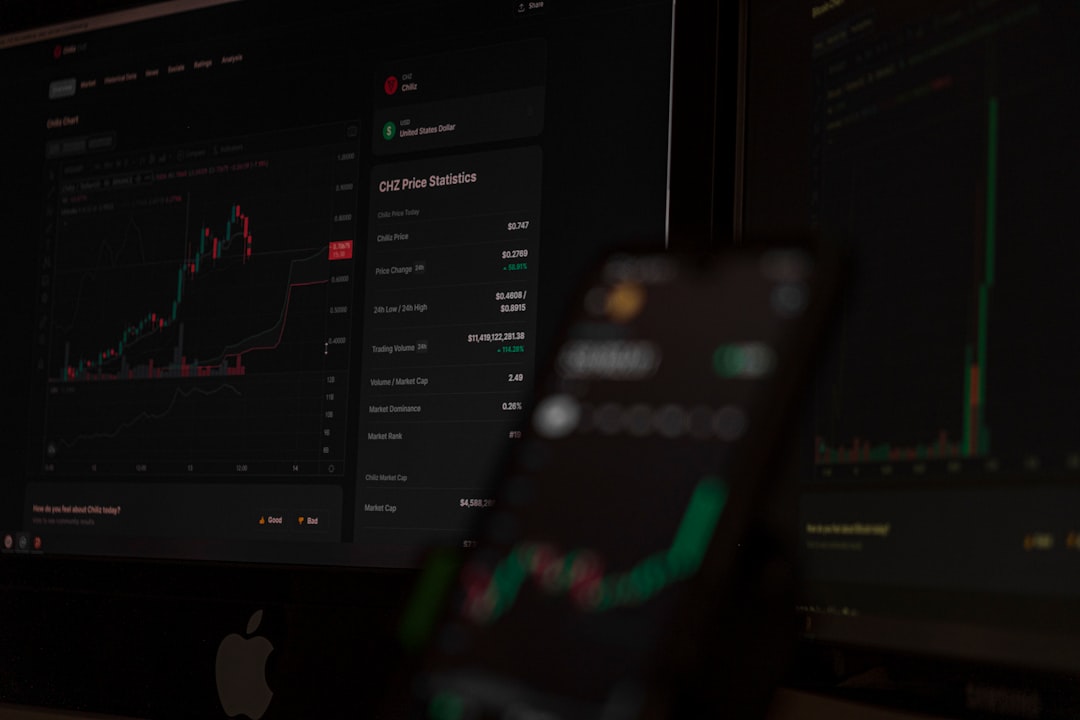A Deep Dive into Market Research and Fundamental Roadmapping

In the fast‑moving world of business, the ability to read the pulse of the market, dissect the financial underpinnings of companies, and translate insights into a clear path forward is the difference between leading and lagging. Successful ventures do not rely on gut feeling alone; they embed rigorous market analysis, meticulous fundamental research, and a structured roadmap into their strategic DNA. By weaving these threads together, leaders can anticipate shifts, uncover hidden value, and guide their organizations with confidence.
Foundations of Market Research
Market research is the compass that points to where opportunities lie and where risks lurk. It begins with defining the scope what segment, what geography, what customer profile and ends with a granular view of competitive dynamics and consumer behavior. A robust research framework follows these core stages:
- Objective Setting – Clarify what you aim to discover. Is it to evaluate a new product idea, understand pricing sensitivity, or benchmark against competitors? Precise questions reduce data overload and sharpen analysis.
- Data Collection – Combine primary research (surveys, focus groups, interviews) with secondary sources (industry reports, regulatory filings, news archives). Each source offers different lenses: primary data captures current sentiment; secondary data provides historical context.
- Data Analysis – Use descriptive statistics to reveal patterns, and inferential techniques (regression, cluster analysis) to test hypotheses. Visualizations such as heat maps or Pareto charts help translate numbers into intuition.
- Insight Generation – Translate quantitative findings into actionable narratives. What unmet needs does a segment have? How does a regulatory change create a new market gap? Insights must be both credible and compelling.
During the early stages, companies often adopt a step‑by‑step checklist to avoid overlooking critical variables. This systematic approach not only saves time but also ensures that the research feeds into downstream decision‑making processes.

Deep Dive into Fundamental Analysis
While market research tells what the market feels like, fundamental analysis digs into why a company is positioned to thrive. It evaluates the intrinsic value of a business by scrutinizing its financial statements, operating model, and competitive moat. The classic pillars of fundamental analysis include:
- Financial Health – Examine income statements, balance sheets, and cash flow statements. Ratios such as debt‑to‑equity, return on equity, and current ratio reveal solvency and profitability trends. Trend analysis over multiple periods can uncover structural shifts.
- Operational Efficiency – Assess cost structures, supply chain resilience, and scalability. A high gross margin often signals strong pricing power, while a low inventory turnover might flag supply chain bottlenecks.
- Market Positioning – Identify the company’s competitive advantages: brand equity, patented technology, or network effects. These assets contribute to a barrier to entry that can sustain long‑term profitability.
- Growth Catalysts – Pinpoint initiatives that can accelerate revenue, such as new product launches, market expansions, or strategic partnerships. Scenario modeling helps estimate the impact of each catalyst under different assumptions.
- Risk Assessment – Map out external risks (regulatory changes, commodity price swings) and internal risks (key‑person dependence, cybersecurity threats). A risk‑adjusted return metric quantifies how risk modifies expected value.
Fundamental analysis is a living process. As market conditions shift, analysts revisit assumptions, update financial forecasts, and adjust valuations. By integrating these insights with market research, a company can triangulate demand realities with supply capabilities, ensuring that strategic moves are both data‑driven and context‑aware.

Roadmap Construction: From Insight to Execution
A strategic roadmap is the bridge that turns research and analysis into concrete action. Building an effective roadmap involves aligning insights with goals, structuring initiatives, and defining clear metrics. The following framework ensures coherence and adaptability:
- Vision & Objectives – Articulate the overarching ambition (e.g., “Capture 20% of the mid‑tier smartphone market by 2027”). Objectives must be Specific, Measurable, Achievable, Relevant, and Time‑bound (SMART).
- Initiative Prioritization – Use scoring models (e.g., Weighted Scoring Matrix) to rank initiatives based on impact, effort, cost, and strategic fit. High‑impact, low‑effort projects become quick wins, while transformative initiatives require deeper resource allocation.
- Resource Allocation – Map human, financial, and technological resources to each initiative. A Gantt chart can visualize timelines, dependencies, and critical paths.
- Governance & Accountability – Assign owners and establish regular review cadences. Decision rights must be clear to avoid bottlenecks.
- Risk Mitigation – Embed contingency plans for high‑risk initiatives. A risk register tracks triggers and mitigation actions.
- KPIs & Feedback Loops – Define outcome metrics (revenue growth, market share, cost savings) and process metrics (time to market, stakeholder satisfaction). Continuous monitoring feeds back into the roadmap, allowing iterative refinements.
By iterating the roadmap each quarter, organizations remain agile. They can pivot resources toward emerging opportunities, re‑prioritize stalled projects, or scale winning strategies. Moreover, aligning the roadmap with stakeholder expectations investors, customers, employees ensures transparency and buy‑in across the ecosystem.

The synergy between market research, fundamental analysis, and roadmap execution is often invisible yet powerful. Market research offers the direction; fundamental analysis provides the confidence in that direction; and the roadmap delivers the mechanics to reach the destination. When these components interlock, a company transforms fragmented data into a coherent narrative that drives sustainable growth.
Now that the framework is in place, the next step is to roll it out. Begin by assembling a cross‑functional team that includes data scientists, finance experts, product managers, and marketing strategists. Empower them to share insights freely, challenge assumptions, and co‑create the roadmap. Leverage collaboration tools that allow real‑time data sharing, version control, and transparent decision logs. Celebrate milestones, but keep an eye on the horizon markets evolve, technologies shift, and customer preferences morph.
As you advance, document lessons learned and embed them into the next iteration of research and analysis. Treat the process as a learning loop rather than a one‑off exercise. In doing so, you not only navigate today’s challenges but also build resilience for tomorrow’s uncertainties.

Jay Green
I’m Jay, a crypto news editor diving deep into the blockchain world. I track trends, uncover stories, and simplify complex crypto movements. My goal is to make digital finance clear, engaging, and accessible for everyone following the future of money.
Discussion (10)
Join the Discussion
Your comment has been submitted for moderation.
Random Posts

Passive Income Projects Using Crypto Affiliate Programs for Huge Earning Potential
Discover how crypto affiliate programs can create recurring passive income by driving users to exchanges, wallets, and DeFi platforms. Learn to pick top partners, automate, and scale your earnings.
8 months ago

Your Ultimate Guide to Staking Tools and Real‑Time Alerts
Unlock passive crypto income with staking: learn how real time alerts, automated tools, and smart monitoring help you maximize rewards, stay ahead of yield swings, and avoid security pitfalls.
9 months ago

Navigating International Laws for Passive Income with Legal and Tax Guidance
Master passive income across borders by understanding legal structures and tax rules that prevent non, compliance, double tax, and protect your profits.
2 weeks ago

Community Voice Drives Affiliate Growth Through Dialogue
Listening to real community conversations turns affiliate marketing from a sales push into a trust based partnership, boosting traffic and conversions through authentic dialogue.
1 year ago

Mastering Support and Resistance in Technical Market Analysis
Learn how to spot pivot points and draw reliable support and resistance lines to turn market noise into clear trading signals.
8 months ago
Latest Posts

Tax Strategies for Long Term Passive Earnings
Learn how smart tax planning can boost your passive income: choose efficient vehicles, use shelters, time gains, and keep more of what you earn.
1 day ago

Passive Income Education Through Legal, Tax, and Risk Management
Turn a side hustle into lasting, hands, off wealth by mastering legal structure, tax strategy, and risk protection, the three pillars that safeguard capital and ensure steady dividends.
1 day ago

Crypto Exchange Basics for Steady Income
Build steady crypto income by defining clear goals, choosing the right exchange tools, and sticking to a disciplined strategy for consistent returns.
2 days ago

